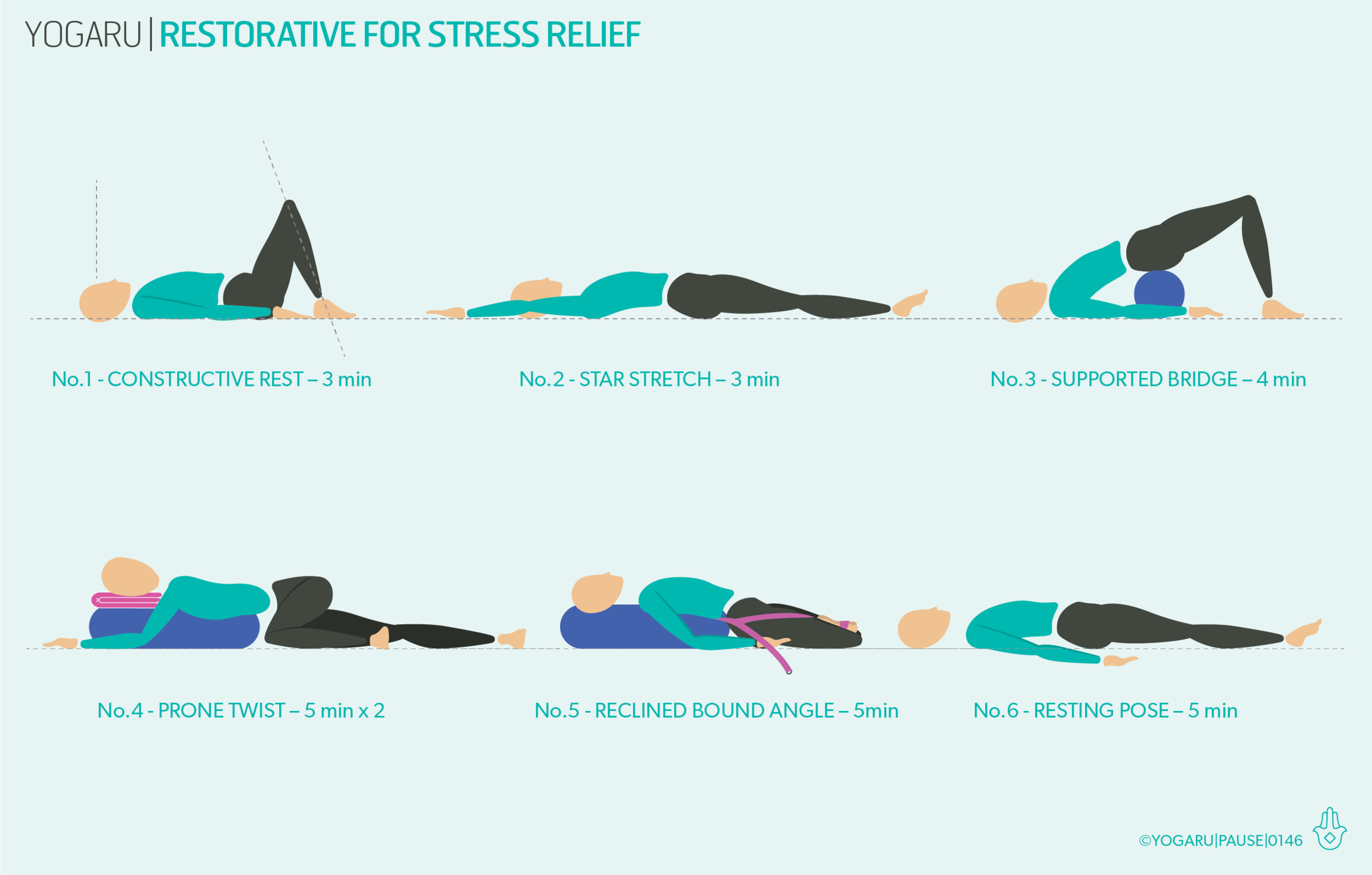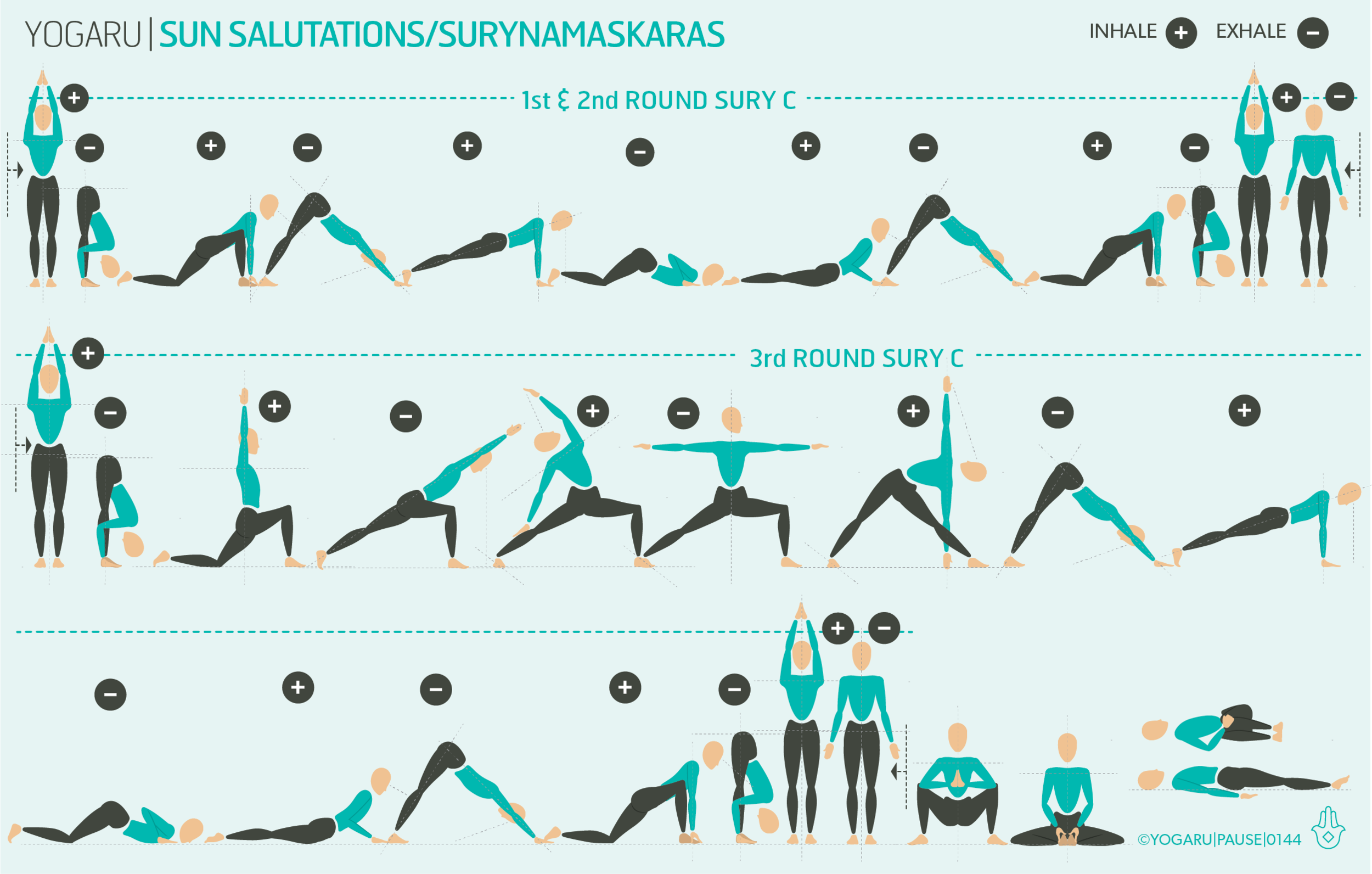PHYSICAL & MENTAL TENSION
Tension can be felt physically and menatlly. It can show up in muscle aches, headaches or digestive issues and can also be a general sense of feeling overwhelmed, stressed or anxious. Physical tension can be caused by mental tension and similarly mental tension can cause physical tension. Prolonged periods of stress can also cause physical and mental tension to accumulate and can be shifted by regulating the nervous system. Yoga works on both physical and mental manifestations of tensions through gentle movement and conscious breathing. As we stretch and move through our practice we release tension from problem areas like the neck, shoulders, lower back, hips. The poses in our yoga practice take focus and concentration and sometimes it can be as simple as distraction is the best cure for washing away our stress, tension and anxieties. Yoga also makes us more aware of our breath, the breath is one of the most powerful tools for releasing stress and tension. The breath stimulates the vagus nerve which is the main cranial nerve associated with the parasympathetic rest and restore response. It travels to and from the brainstem straight to the throat, heart, diaphragm, stomach, kidneys, liver, pancreas, gallbladder, sphincter and reproductive organs. It is responsible for slowing heart rate and reducing blood pressure, relaxing our airways, stimulating digestion and reproductive organs, inhibiting adrenaline production, stimulating endorphin production and relaxing the muscles.
RESTORATIVE YOGA AND TENSION
Restorative yoga in particular helps to initiate the parasympathetic rest and restore response and is a direct pathway to the nervous system. The poses in restorative yoga are designed to deliberately shift you into relaxation and is considered a ‘non sleep deep rest’ or NSDR practice. NSDR are practises which are scientifically proven to give more benefits than even a good night's sleep in terms of less time required to achieve better brain and body function. Taking a restorative pose, or Savasana, at the end of your practice, teaches the body to let go of the physical challenges of the practice and cultivates a malleable nervous system ready to return to balance after a period of stress.
EXPLORING SHIFTING TENSION IN YOUR PRACTICE
The sequence starts with a gentle warm up, moves into some standing poses to shift habitual areas of tension, and finishes with two restorative poses to assimilate and optimise your chance to shift both physical and mental tension. The standing flows will target the front of the hips and the shoulders which can both be tight from prolonged periods of sitting with the pelvis tilted back and the shoulders hunched forward, or from moving throughout your day without awareness of good posture. As you move through the sequence bring your attention to the areas that you find you might habitually hold tension. Scan down through your body from the tip of your crown to your toes and see if you can root out any areas that you weren’t aware you were tensing and gripping. Pay particular attention to your neck, jaw, shoulders, lower back and hips, which are renowned areas that we all hold tension.
ALIGNMENT CUES
The peak pose of this sequence is Viparita Virabhadrasana/Reverse Warrior, a pose I find I am adding to my practice lots recently. It gives a lovely side stretch to realign the spine, opens the hips, inner groin, frees up the shoulder joint and encourages light core activation.
Have a read of the tips below and either print out the sequence or save it onto your device:
From Virabhadrasana II, inhale, turn your right palm to face up, hinge to your left from your waist, reach your right palm up and over your ear.
Rest your left hand on your left thigh or your lower calf, draw your navel towards your spine.
Lengthen through your right side body all the way to your fingertips, keep your right leg deeply bent, gaze up to your right fingertips.
To save the images for personal use click and hold down the image until the ‘save image’ option appears; on Mac hold down ‘control’ and click the image to get the option box; on PC right click on the image to get the option box. Scroll down in the ‘option box’ and click ‘save image’.
Ruth Delahunty Yogaru




